Verdun Fortifications
The bishopric of Verdun was annexed by France in 1552, and the conquest
was finally legitimized in 1648. In the 1620s and 1630s, a
citadel was built on a hill on the site of an abbey.
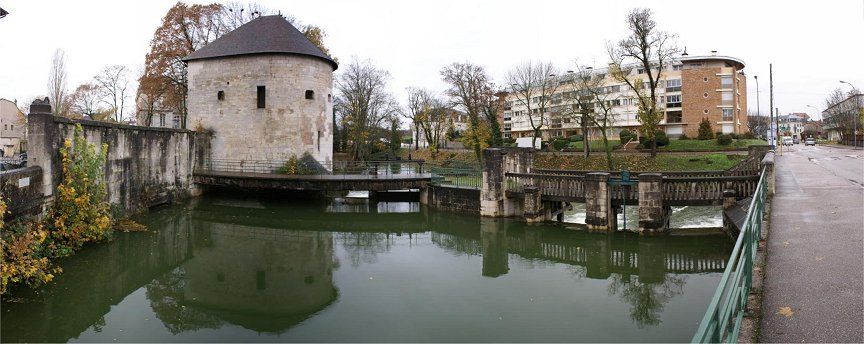
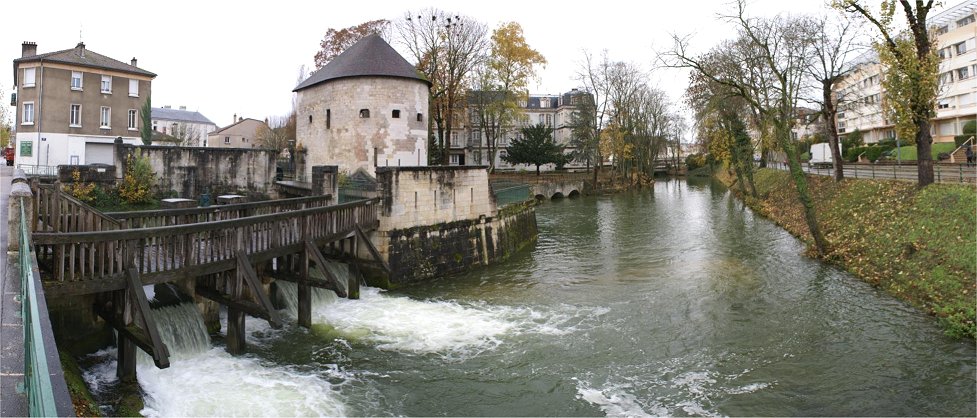
Canal du Puty
The original Verdun was built on islands in the Meuse. The town's
bridge made it an important strategic point, as a river
crossing was rare. The river also made the town easier to defend. Vauban
was tasked with modernizing the defenses in the late 1600s.
Vauban's design allowed for the level of the water in the moat to
be regulated.
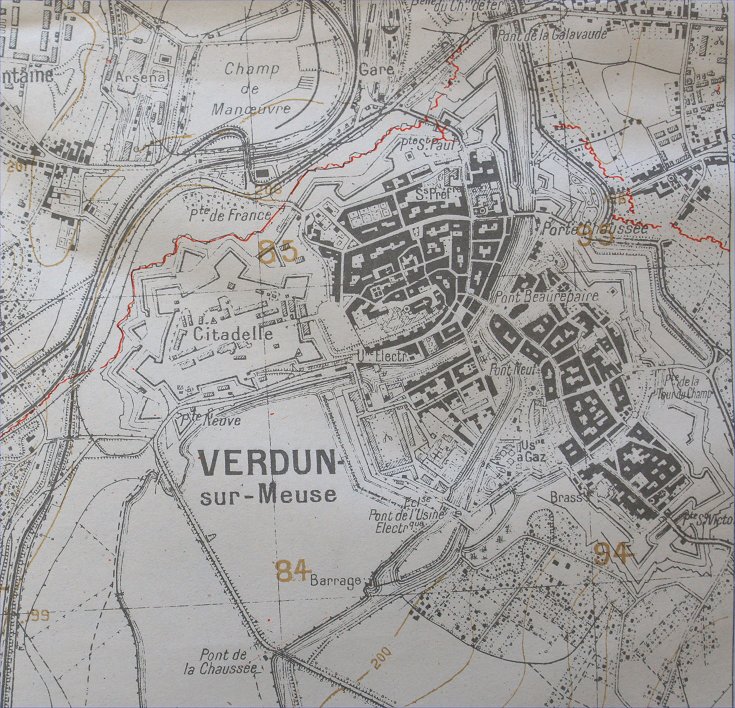
First World War Era Map From George C. Marshall Library
Note the Porte Chausse and the Citadel.

Porte Chaussee, dating to 1380, is at left. A vital part of
the medieval defenses, the two circular towers protected the city's
largest and most important bridge. For the sake of economy,
instead of a whole new system of city walls, Vauban kept the medieval
defenses and protected them with demi-lunes. Across the
river, at right, is the interior of one of Vauban's demi-lunes.
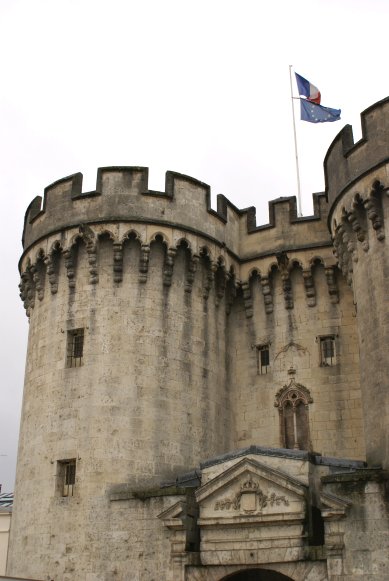
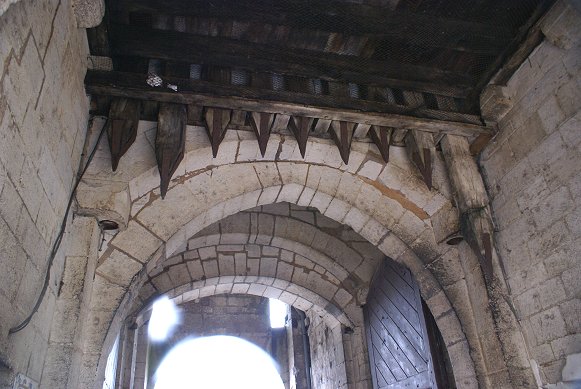

The Porte Chaussee is at right. The demi-lune is on the left side
of the panorama. During the First World War, many men marched
through the Porte Chassee on their way to the front.
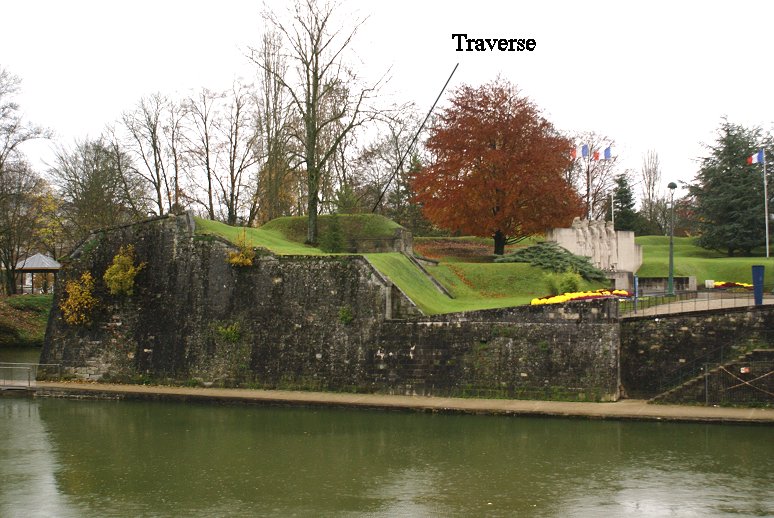
This is the view of the rear of the demi-lune from the bridge. A traverse runs down the center.

In the fall of 2010, this demi-lune's scarp was under restoration.

Citadel
The citadel was built on a hill west of town. The road at right
parallels the river. The citadel would be used as a command post
during the First World War.
This area, the Carrefour des
Marechaux, features statues of famous French military commanders.
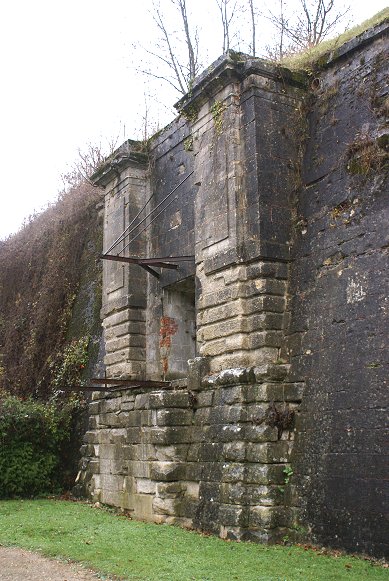
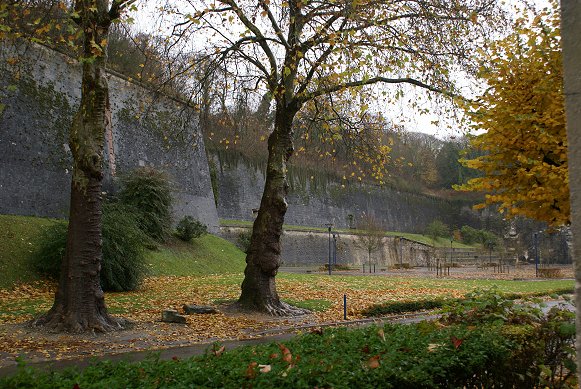
River-Facing Portion of Citadel
Copyright 2010-11 by John Hamill
Back to Verdun











